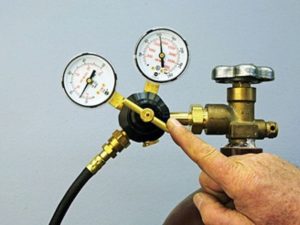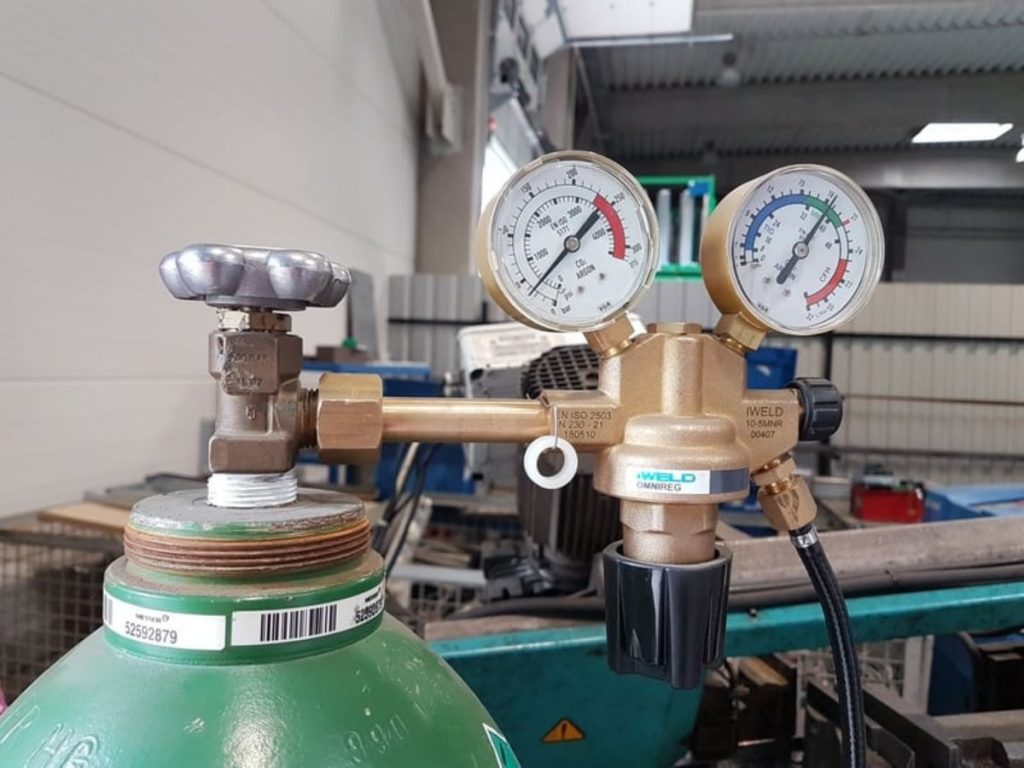What Gas is Used for MIG Welding?
If you’re new to MIG welding, you might be wondering what gas is used for MIG welding and why. In short, the gas used in MIG welding serves two purposes: it protects the weld pool from oxidation and contamination, and it helps to stabilize the arc. In this blog post, we’ll take a more in-depth look at the different types of gases used in MIG welding and their specific benefits.
The Different Types of Gases Used in MIG Welding
Argon Gas
Argon is the most common gas used in MIG welding, particularly for aluminum and stainless steel. Argon is an inert gas, which means it doesn’t interact with other elements, making it ideal for protecting weld pools from oxidation. Argon is also less expensive than other types of gas, making it a good choice for budget-conscious welders.
Helium Gas
Helium is another common gas used in MIG welding. Like argon, helium is an inert gas that protects weld pools from oxidation. However, helium is also much lighter than argon, making it easier to create a stable arc. This makes helium a good choice for beginners or those who are welding with thicker materials.
Carbon Dioxide Gas
Carbon dioxide (CO2) is a semi-inert gas that’s often used in MIG welding because it’s less expensive than argon or helium. CO2 is also heavier than argon or helium, making it easier to create a stable arc when welding with thicker materials. However, because CO2 is semi-inert, it can cause some contamination of the weld pool if not used correctly.
Oxygen Gas
Oxygen gas is sometimes used in MIG welding to speed up the welding process. However, because oxygen interacts with other elements, it can cause excessive oxidation of the weld pool. For this reason, oxygen gas is only used in certain types of MIG welding and should be avoided if you’re new to the process.

How does Gas help in Welding?
Gas plays an important role in welding because it helps to create the necessary heat and flame required for two pieces of metal to fuse together. Without gas, welders would not be able to create the high temperatures needed to weld metals together. Gas also helps to protect the weld from contamination by providing a shield around the area being welded. This is important because contaminants can weaken the weld or cause it to fail entirely.
There are several different types of gas that can be used for welding, but the most common is oxygen-acetylene. This gas mixture is often used for welding metals that are not very thick because it can create very high temperatures. Another type of gas that is sometimes used is argon. Argon is a heavier gas than oxygen and provides more protection for the weld, making it ideal for welding thicker metals.
Gas is an essential part of welding and helps to create the necessary heat and flame required for two pieces of metal to fuse together. Without gas, welders would not be able to create the high temperatures needed to weld metals together. Gas also helps to protect the weld from contamination by providing a shield around the area being welded. This is important because contaminants can weaken the weld or cause it to fail entirely.
Why is this gas a good choice for mig welding?
If you’re planning on doing some mig welding at home, you might be wondering what type of gas to use. There are a variety of gases available, each with its own advantages and disadvantages. In this blog post, we’ll take a look at why natural gas is the best choice for mig welding.
One of the main reasons to choose natural gas for mig welding is that it’s very consistent. This is important because it means that you’ll be less likely to get unexpected results while welding. Natural gas also produces fewer emissions than other types of gases, making it more environmentally friendly.
Another advantage of natural gas is that it’s very affordable. This is especially important if you’re a professional who needs to weld on a regular basis. The last thing you want is to have to worry about budgeting for expensive gas.
Conclusion:
There are a variety of gases that can be used in MIG welding, each with its own benefits and drawbacks. Argon is the most common type of gas used because it’s inexpensive and protects weld pools from oxidation. Helium is also a popular choice because it’s lighter than argon and creates a stable arc. Carbon dioxide (CO2) is less expensive than argon or helium but can cause some contamination of the weld pool if not used correctly. Oxygen gas can speed up the welding process but can also cause excessive oxidation of the weld pool. When choosing a type of gas for MIG welding, consider your material, budget, and level of experience to make the best decision for your project.

